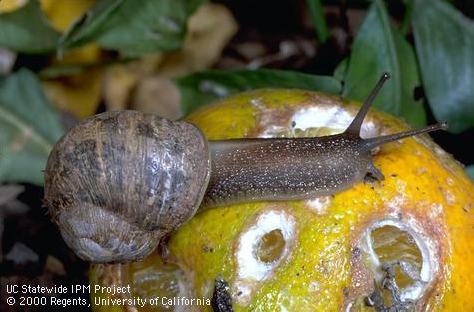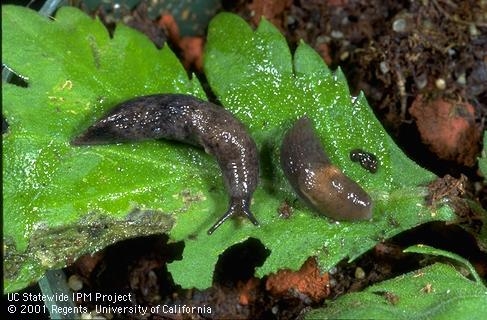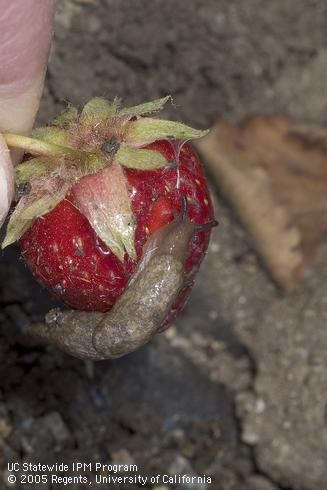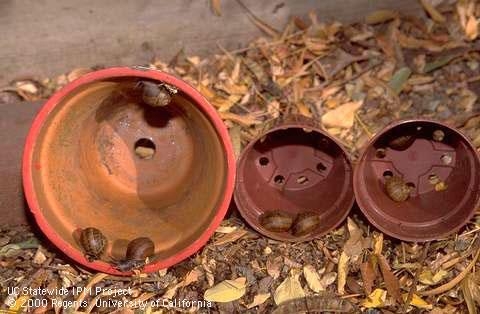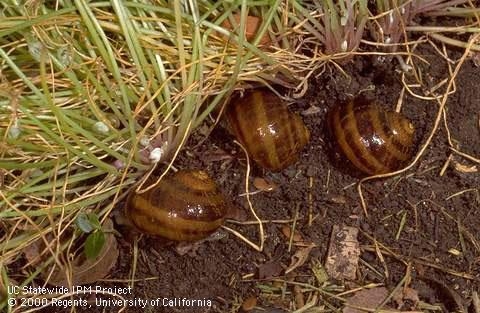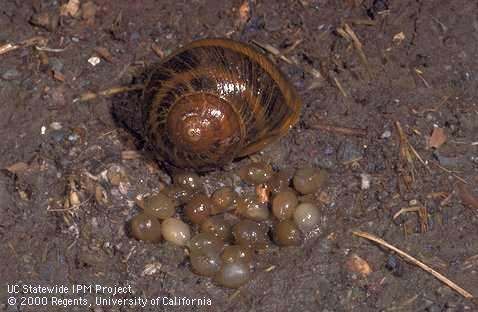Our rainy spring weather has been great for our gardens – but may also have encouraged some unwelcome garden visitors, including snails and slugs.
Snails and slugs are similar in structure and biology, but snails have a characteristic spiral shell while slugs lack a shell. They both chew irregular holes on a variety of plants, preferring to feed on succulent plant parts such as leaves and flowers as well as seedlings. These pests will also feed on fruits that are close to the ground. Snails and slugs require a moist habitat, so they are most active at night or on cloudy or foggy days. They are also hermaphroditic, meaning every individual has the potential to mate and lay eggs. Thus, slugs and snails have the potential for rapid population growth when conditions are right.
To control snails, slugs and other pests, the University of California recommends that homeowners follow the Integrated Pest Management (IPM) process. IPM is a strategy that focuses on long-term prevention of pests by utilizing cultural, biological, mechanical and physical controls. With IPM, pesticides (chemical control) are used only as a last resort, and when pesticides are used, they are applied in ways that minimize harm to nontarget organisms, humans, pets, and the environment.
Gray garden slugs. Jack Kelly Clark, UC IPM Program
Gray garden slug feasting on a strawberry. Jack Kelly Clark, UC IPM Program
Mechanical or physical controls kill a pest directly or block a pest from an area experiencing damage. In the case of snails and slugs, handpicking is an effective mechanical control if it is done on a regular basis. They can be searched out after dark with a flashlight and then either crushed in place or picked up with rubber gloves. Once they have been picked up, they can be placed in a bag and thrown away in the trash, or placed in a bucket of soapy water and disposed of in a compost pile after they are dead. Alternatively, if you are lucky enough to know someone with pet turtles, you can give your snails and slugs to them (as long as they are healthy) -- most turtle owners are happy to receive these pests, which add protein to the turtle diet. Those with backyard chickens may be similarly appreciative, as chickens, too, eat snails.
Flower pots turned to reveal trapped snails. Jack Kelly Clark, UC IPM Program
Copper flashing or copper foil can be used as a physical barrier for slugs and snails. It is believed that copper is an effective barrier because it reacts with the slime of these pests, causing a disruption in their nervous system that is similar to an electric shock. These barriers should be at least four inches wide with the bottom buried in the soil to prevent slugs from crawling under them. Dry ashes or other abrasives such as diatomaceous earth can also be used as barriers for slugs and snails. Such abrasives should be piled about one inch high and 3 inches wide to be effective. However, these materials lose their deterrent value if they become damp, making them not very useful in most garden situations. Another drawback of wood ashes is that they are quite alkaline and can have a detrimental effect on soil pH.
Adult brown garden snails hiding under dense cover. Jack Kelly Clark, UC IPM Program
Slug and snail baits can be applied as a last resort, but are most effective if used in conjunction with the IPM methods described above. There are other effective baits, but baits containing iron phosphate are the only ones that are safe for children, domestic animals, birds, fish and other wildlife. Iron phosphate baits are sold under many trade names including Sluggo and Escar-Go. The bait should be placed in moist areas that snails or slugs are likely to frequent. Timing is also important. If the weather is very hot, dry, or cold, baiting will have a limited effectiveness because slugs and snails are least active during these times. Take advantage of snail and slug habits by irrigating before baiting and scattering the bait in the late afternoon or evening.
Adult brown garden snail near fresh snail eggs. Jack Kelly Clark, UC IPM Program
UC Master Gardeners of Butte County are part of the University of California Cooperative Extension (UCCE) system. To learn more about us and our upcoming events, and for help with gardening in our area visit our website. If you have a gardening question or problem, email the Hotline at mgbutte@ucanr.edu or leave a phone message on our Hotline at 530-552-5812. To speak to a Master Gardener about a gardening issue, or to drop by the MG office during Hotline hours, see the most current information on our Ask Us section of our website.
